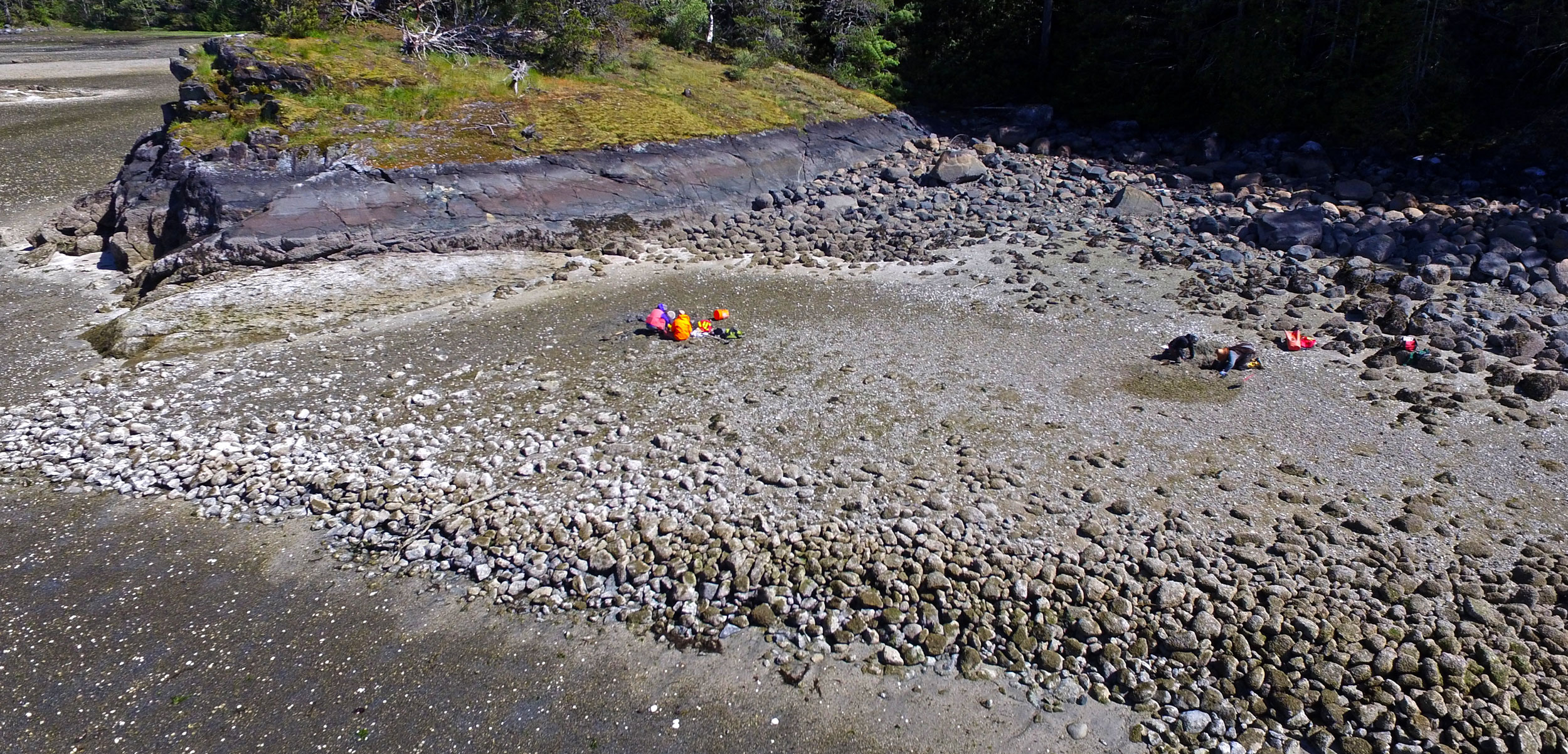Environment & Energy
Related: About this forum'Bringing beaches back to life': the First Nations restoring ancient clam gardens
Adrienne Matei in Vancouver
Wed 23 Sep 2020 05.17 EDT
On winter nights for the past six years, a group of 20 people have rustled through dark, coniferous woods to emerge on a Canadian beach at the lowest possible tide, illuminated by a correspondingly full moon.
An elder offers a greeting to the place and a prayer, then the team of researchers, volunteers, and First Nations “knowledge holders” lights a warming fire and begins its work. At sites outlined by stones placed hundreds or even thousands of years ago, some begin raking, or “fluffing”, the top three inches of the beach, loosening rocks and mud - and a remarkable number of old clam shells.
When the tide comes back in, it will flush out any rotting organic matter, changing “some places that are compact and smelly into a good clam beach again”, says Skye Augustine, a member of the Stz’uminus First Nation.
This spot was once a clam garden, an ancient indigenous form of mariculture that coastal First Nations people have used for millennia. It is estimated that they once numbered in the thousands along the Pacific north-western coast, though ruins are all that’s left of most. In collaboration with the W̱SÁNEĆ and Hul’q’umi’num nations, Augustine has spearheaded the first formal clam garden rehabilitations at two sites in the Gulf Islands, in British Columbia, with dozens more to follow.
More:
https://www.theguardian.com/environment/2020/sep/23/clam-gardens-first-nations-beaches-pacific-northwest
~ ~ ~

Rock-walled clam gardens are an aquaculture technology used by Indigenous peoples along the North American west coast to enhance the production of clams and other marine species. Photo by Keith Holmes
Clam Digging through 3,500 Years of Indigenous History
Newly dated clam gardens show the technology is much older than previously thought.
by Larry Pynn
February 27, 2019 | 850 words, about 4 minutes
Clam gardens are found from Southeast Alaska to Washington State and serve more than clams. The gardens become home to all manner of marine life forms, including crabs, whelks, and chitons, adding to biodiversity on the beaches. “They’re more sea gardens than clams,” Smith says.
To unlock the secrets of these ancient structures, researchers excavated six walls in Kanish Bay and three in Waiatt Bay, on Quadra Island off northeastern Vancouver Island. The scientists collected radiocarbon** samples from the scars where barnacles attached themselves to the rocks, as well as from clamshells that were wedged into and beneath the walls—all neatly preserved by the sediment.
At the time they were built, the clam garden rock walls on Quadra Island would have been placed at the lowtide line. Today, those same rock walls are located as much as a meter upslope, but still flood at high tide.
For years, researchers assembled on the beaches during the lowest tides, working feverishly before the ocean returned and flooded their worksites. “We’d race like crazy, then after the tide came in, we were spread-eagle on the ground to catch our breath,” says archaeologist Dana Lepofsky of Simon Fraser University in Burnaby, British Columbia. “It was totally wild, covered in mud from head to toe.”
More:
https://www.hakaimagazine.com/news/clam-digging-through-3500-years-of-indigenous-history/
democrank
(11,094 posts)So interesting
hunter
(38,311 posts)Colonists from Europe trashed it.